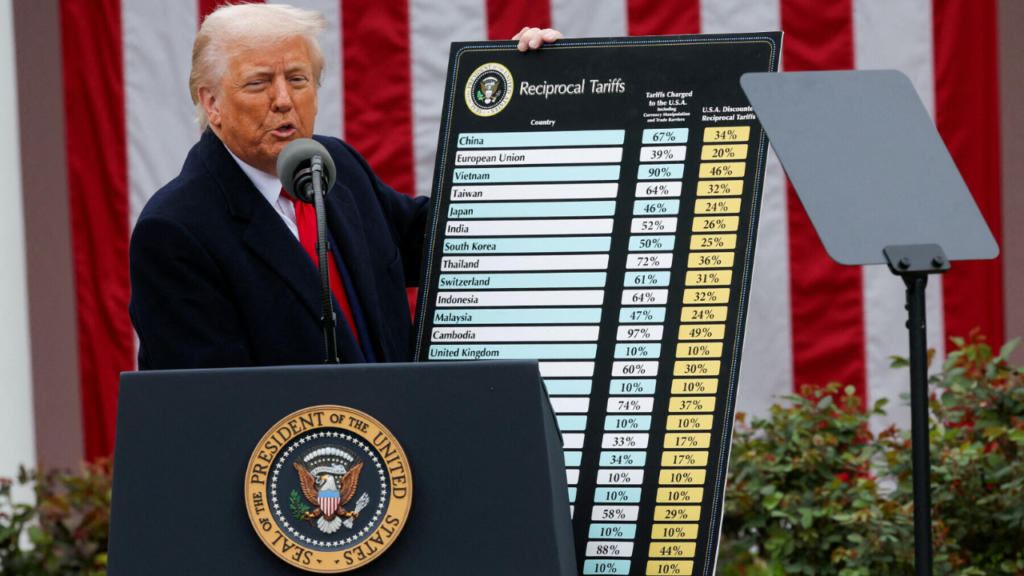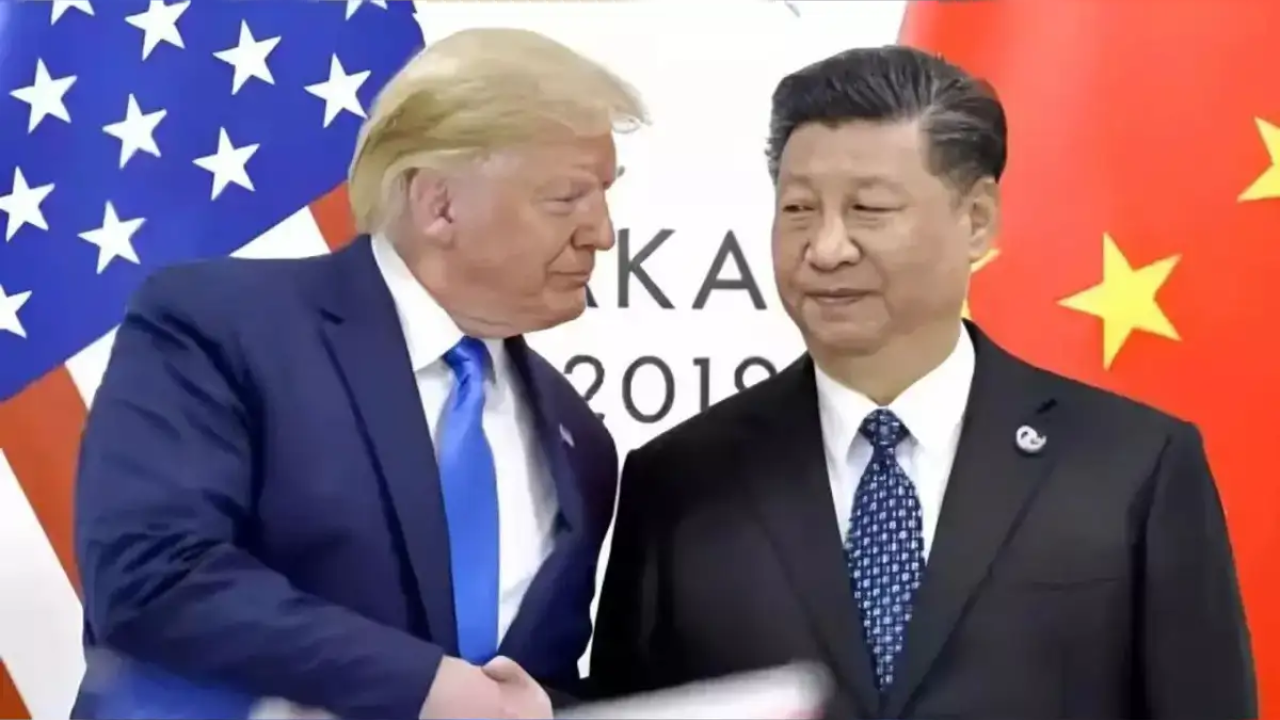China’s economy is beginning to feel the real effects of the ongoing trade war, as the steep tariffs imposed by former President Trump continue to hit export orders and production in the country’s manufacturing sector.
Data released this week reveals that China’s new export orders saw a significant drop in April, falling to its lowest point since the height of the Covid-19 pandemic in 2022.
At the same time, the overall manufacturing activity within China weakened, showing its slowest pace in over a year.
These figures were compiled by China’s National Bureau of Statistics and serve as a warning that the country’s economy is under significant strain due to the ongoing trade conflict.
The sharp downturn in export orders indicates that Trump’s aggressive tariffs on Chinese imports are beginning to bite deep into the core of China’s economy.
This has put additional pressure on the Chinese government to ramp up its stimulus measures in a bid to prop up growth.
The recent data also suggests that President Xi Jinping is facing mounting pressure to reach a deal with the U.S. to end the trade war, though for now, Beijing’s message remains defiant as it refuses to yield to what it calls “U.S. bullying.”
One of the key indicators of China’s manufacturing activity, the purchasing managers’ index (PMI), dropped to 49 in April, down from 50.5 in March.
This index is a critical tool for understanding the health of China’s factories. A score above 50 signals growth, while a figure below indicates contraction. The latest reading is the lowest since December 2023, showing that manufacturing activity is slowing down.
Even more concerning is the drop in new export orders, which plummeted to 44.7 in April, the weakest reading since December 2022.
This decline reflects the impact of U.S. tariffs on Chinese goods, with many American companies canceling or postponing orders as they try to adjust to the rising costs from tariffs. U.S. importers had rushed to stockpile goods earlier in the year before the new tariffs went into effect, but now, those orders are drying up.
During Trump’s second term, the U.S. administration imposed a staggering 145% tariff on Chinese imports as part of a broader effort to overhaul the U.S. trade relationship with the rest of the world.
The U.S. government argues that these tariffs are necessary because China has been unfairly blocking U.S. exports and manipulating trade rules in its favor. In early April, Trump introduced additional tariffs targeting both allies and rivals, though he later delayed them for 90 days to allow for negotiations.
The U.S. has focused much of its tariff assault on Chinese goods, citing concerns over China’s growing industrial power and increasing geopolitical influence.
China, on the other hand, has retaliated by raising tariffs on U.S. imports and restricting exports of essential minerals used in high-tech industries like battery production.
While China’s economy is reeling, Xi Jinping has made it clear that Beijing is willing to endure a long battle over trade, urging other countries to resist U.S. pressure.

Despite Beijing’s firm stance, the data for April paints a grim picture of the economy. Last year, Chinese exports contributed to around a third of the country’s economic growth.
Many economists have warned that if the trade war continues, China could face significant job losses. Goldman Sachs estimates that between 10 and 20 million manufacturing jobs in China depend on U.S. imports.
As a result, the Chinese government has promised to increase borrowing and public spending to counteract the negative impact of falling exports. However, these efforts have done little to boost confidence, and economists have downgraded their growth forecasts for China this year.
Capital Economics, a well-respected consulting firm, predicted that the Chinese economy would grow just 3.5% in 2025, far below the government’s target of around 5%.
The firm added that although survey data on manufacturing could be influenced by sentiment rather than actual activity, the overall picture still points to a strained economy.
The decline in export orders this April was the worst since 2012, excluding the disruptions caused by the COVID-19 pandemic.
The International Monetary Fund (IMF) has also weighed in on the global economic outlook, warning that the trade war could have negative effects on global growth. Data from other Asian countries like South Korea and Japan show similar weakness in their export sectors.
Meanwhile, shipping data indicates a severe reduction in cargo shipments between the U.S. and China, highlighting the growing disconnect in global trade.
At this point, it is unclear whether the U.S. and China can negotiate a trade agreement that would ease tensions and allow for a return to more normalized trade relations, though it is expected that trade volumes will likely remain reduced.
The U.S. has already taken steps to ease some of the pressure by exempting consumer electronics like smartphones from tariffs and allowing some U.S. goods to enter China without tariffs.
However, there has been little progress in actual trade talks between Washington and Beijing, leaving the future of the trade war uncertain.
While China may stand firm in its opposition to U.S. pressure, the country’s economy is likely to continue feeling the strain of the trade war in the coming months.
As the tariffs continue to take their toll, both China and the U.S. will need to find a way to reach a resolution that benefits both sides before the global economy faces further instability.
Disclaimer- Our team has thoroughly fact-checked this article to ensure its accuracy and maintain its credibility. We are committed to providing honest and reliable content for our readers.






